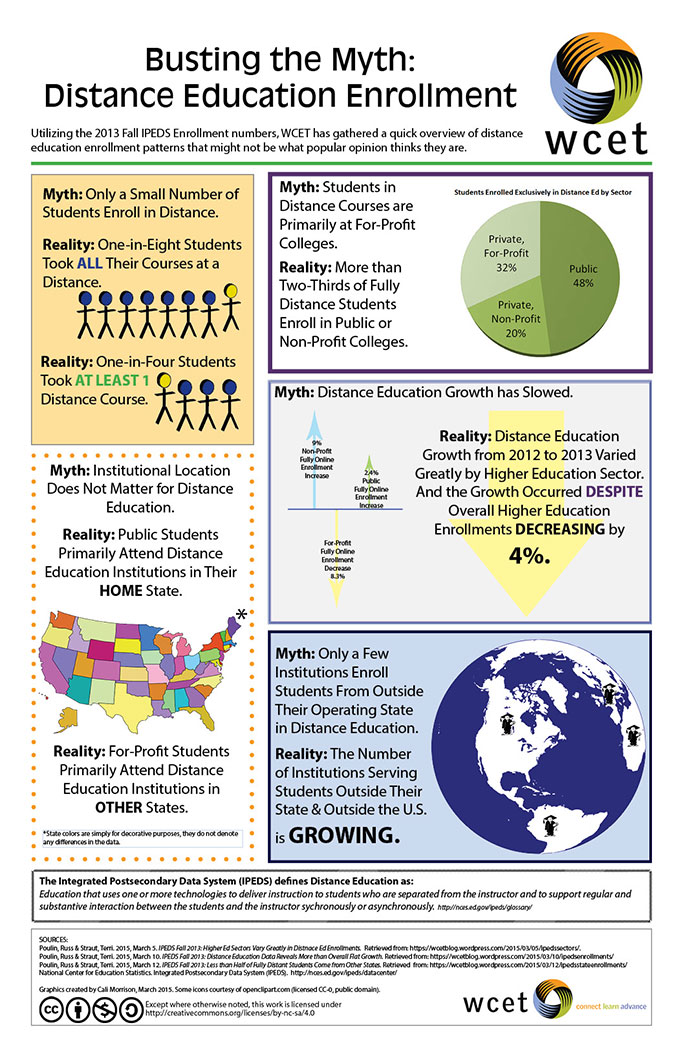Accessible Text:
Utilizing the 2013 Fall IPEDS Enrollment numbers, WCET has gathered a quick overview of distance education enrollment patterns that might not be what popular opinion thinks they are.
Myth: Only a small number of students enroll in distance courses.
Reality: One-in-eight students is took ALL their courses at a distance.
Reality: One in-four students took AT LEAST 1 distance course.
Myth: Students in distance courses are primarily at for-profit colleges.
Reality: More than two-thirds of fully distance students enroll in public or non-profit colleges.
Myth: Distance Education growth has slowed.
Reality: Distance education growth from 2012 to 2013 varied greatly by higher education sector. And the growth occurred despite overall higher education enrollments decreasing by 4%.
Myth: Institutional location does not matter for distance education.
Reality: Public Students Primarily Attend Distance Education Institutions in Their Home State.
Reality: For-profit Students primarily attend distance education institutions in other states.
Myth: Only a few institutions enroll students from outside their state in distance education.
Reality: The number of institutions serving students outside their state & outside the U.S. is growing.
The Integrated Postsecondary Data System (IPEDS) defines Distance Education as:
Education that uses one or more technologies to deliver instruction to students who are separated from the instructor and to support regular and substantive interaction between the students and the instructor sychronously or asynchronously. http://nces.ed.gov/ipeds/glossary/
SOURCES:
Poulin, Russ & Straut, Terri. 2015, March 5. IPEDS Fall 2013: Higher Ed Sectors Vary Greatly in Distance Ed Enrollments. Retrieved from: https://wcetblog.wordpress.com/2015/03/05/ipedssectors/
Poulin, Russ & Straut, Terri. 2015, March 10. IPEDS Fall 2013: Distance Education Data Reveals More than Overall Flat Growth. Retrieved from: https://wcetblog.wordpress.com/2015/03/10/ipedsenrollments/
Poulin, Russ & Straut, Terri. 2015, March 12. IPEDS Fall 2013: Less than Half of Fully Distant Students Come from Other States. Retrieved from: https://wcetblog.wordpress.com/2015/03/12/ipedsstateenrollments/
National Center for Education Statistics. Integrated Postsecondary Data System (IPEDS). http://nces.ed.gov/ipeds/datacenter/
Except where otherwise noted, this work is licensed under Creative Commons Attribution – Non-Commercial – Share Alike 4.0 http://creativecommons.org/licenses/by-nc-sa/4.0
Full Infographic:

